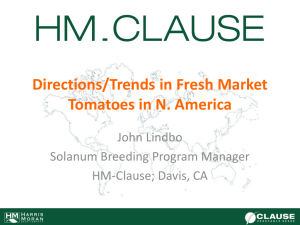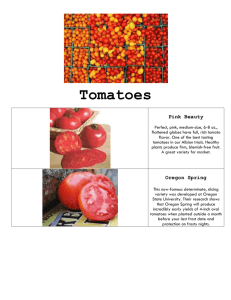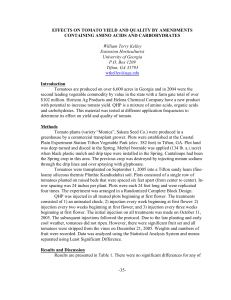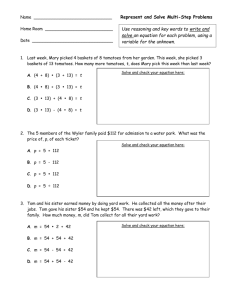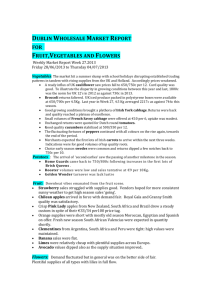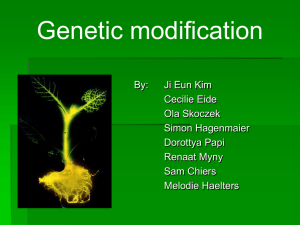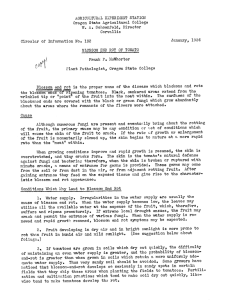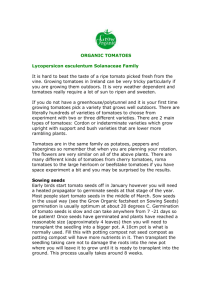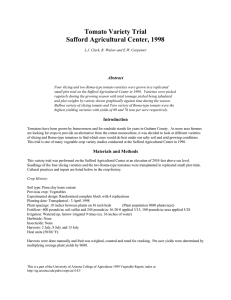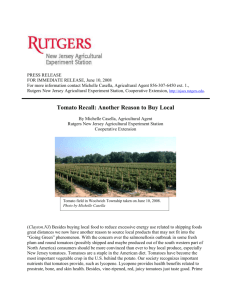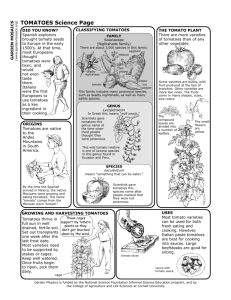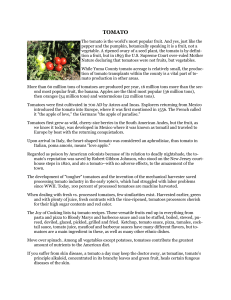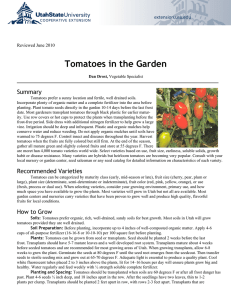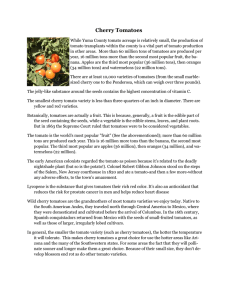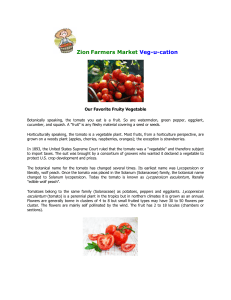Temperature and the Tomato (Page 82-83)
advertisement
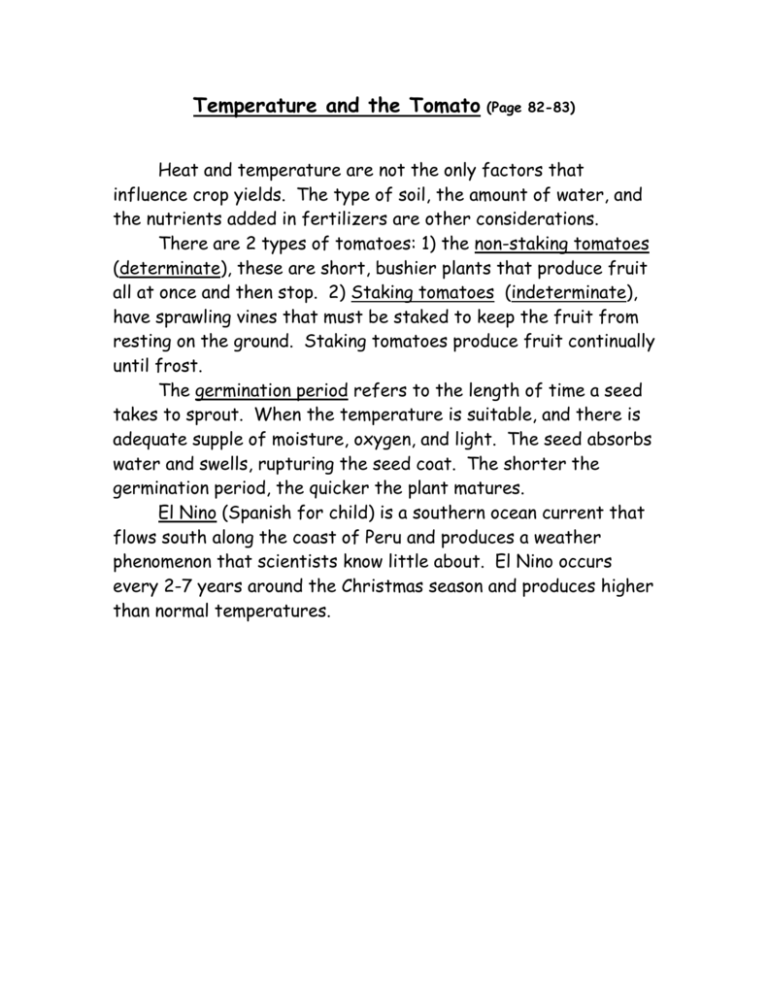
Temperature and the Tomato (Page 82-83) Heat and temperature are not the only factors that influence crop yields. The type of soil, the amount of water, and the nutrients added in fertilizers are other considerations. There are 2 types of tomatoes: 1) the non-staking tomatoes (determinate), these are short, bushier plants that produce fruit all at once and then stop. 2) Staking tomatoes (indeterminate), have sprawling vines that must be staked to keep the fruit from resting on the ground. Staking tomatoes produce fruit continually until frost. The germination period refers to the length of time a seed takes to sprout. When the temperature is suitable, and there is adequate supple of moisture, oxygen, and light. The seed absorbs water and swells, rupturing the seed coat. The shorter the germination period, the quicker the plant matures. El Nino (Spanish for child) is a southern ocean current that flows south along the coast of Peru and produces a weather phenomenon that scientists know little about. El Nino occurs every 2-7 years around the Christmas season and produces higher than normal temperatures. Questions: 1. What is the difference between staking and non-staking tomatoes? 2. What is a germination period and how does it affect plants? 3. How does El Nino affect temperatures and when does it occur? 4. In North America, why do tomato plants die in less than a year? 5. What do we mean by growing season? 6. Outdoors, at what temperatures will a tomato seed germinate? 7. What does Time of Maturity mean? 8. When can the tomato plant be placed in a garden? 9. How long is the growing season where we live? 10. Which parts of Canada have the longest growing season? Answers: 1. Staking tomatoes have vines and must be staked so the fruit do not lie on the ground, they produce tomatoes continually until frost. Non-staking tomatoes are bushier plants that only produce fruit once and then stop. 2. The germination period is the length of time a seed takes to sprout. It affects how quickly a plant matures. 3. El Nino produces higher than normal temperatures and occurs every 2-7 years around Christmas time. 4. Tomatoes plants die in less than a year because they can not survive if the air temperature drops below 0 C. 5. The growing season is the number of days in a year with an average temperature above 5 C. 6. Outdoors, a tomato plant will germinate when the soil is 10 C. 7. Time of maturity is the length of time from flowing until fruit can be picked. 8. Tomato plants can be placed in the garden when it is 40 days old. 9. The growing season where we live is between 180-220 days. 10.The southern part of British Columbia has the longest growing season in Canada.
